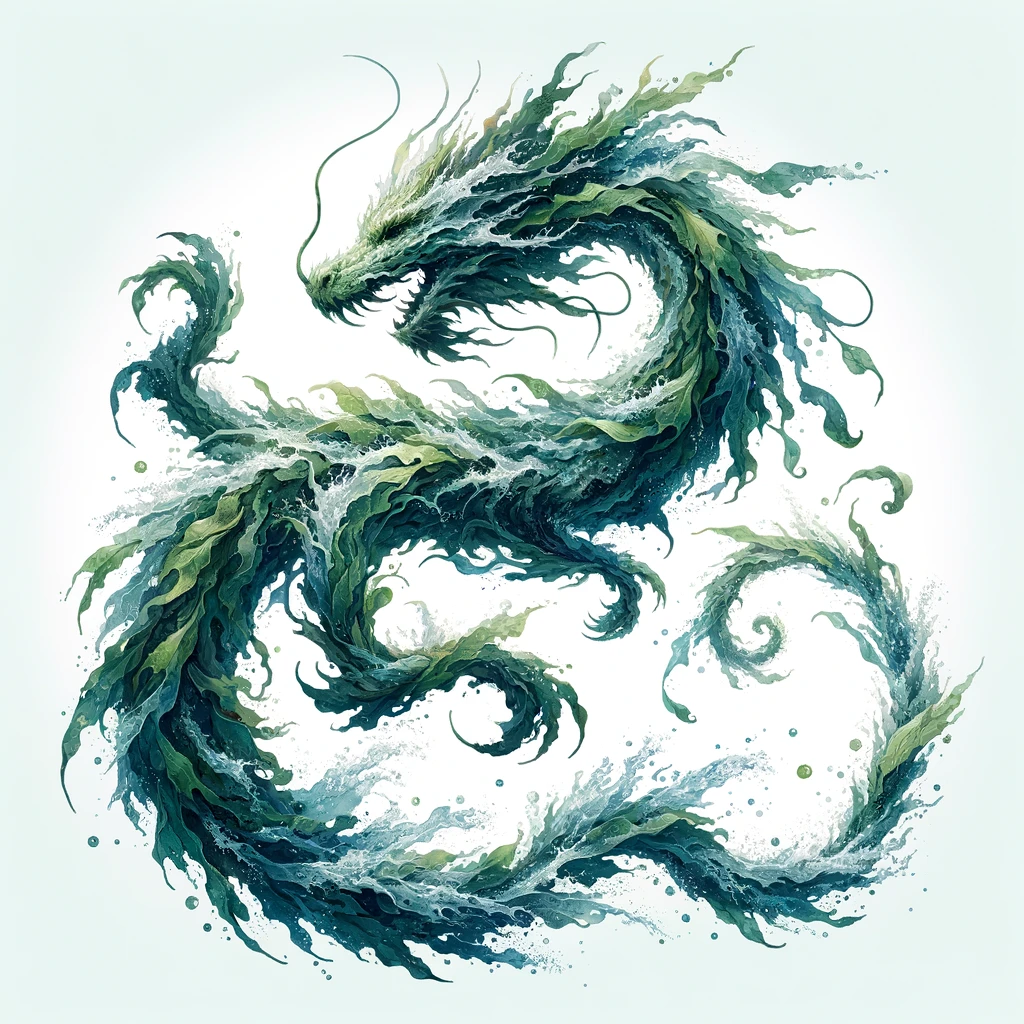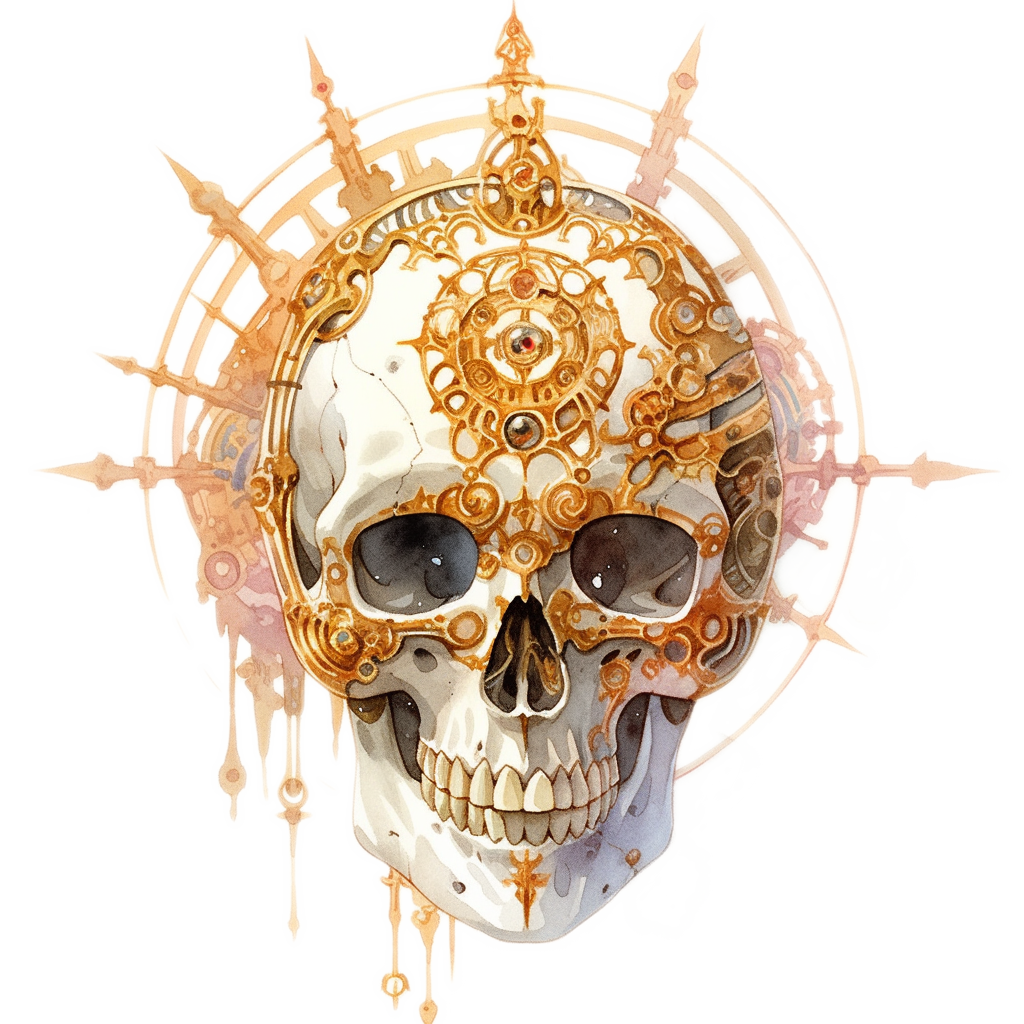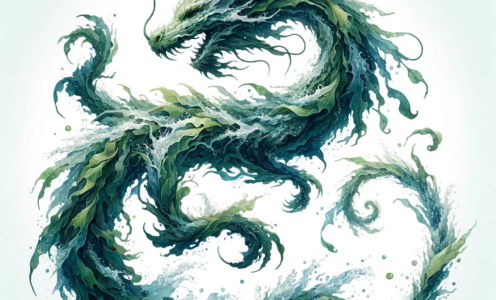Tsunami Dragon
Also known as elemental water dragon, typhoon dragon, flashflood dragon
| CLIMATE/TERRAIN: | Elemental Water, deep seas |
| FREQUENCY: | Very Rare |
| ORGANISATION: | Solitary |
| ACTIVITY CYCLE: | Any |
| DIET: | Special |
| INTELLIGENCE: | Genius (17-18) |
| TREASURE: | Special |
| ALIGNMENT: | Varies |
| NO. APPEARING: | 1 (2-5) |
| ARMOUR CLASS: | -3 (base) |
| MOVEMENT: | 4, Swim 35 |
| HIT DICE: | 18 (base) |
| THAC0: | 3 (at 18 HD) |
| NO. OF ATTACKS: | 3 + special |
| DAMAGE/ATTACK: | 1d12 / 1d12 / 4d10 |
| SPECIAL ATTACKS: | See below |
| SPECIAL DEFENCES: | See below |
| MAGIC RESISTANCE: | See below |
| SIZE: | G (40′ base) |
| MORALE: | Fanatic (17-18) |
| XP VALUE: | See below |

Tsunami dragons are extremely fluid creatures, in form and personality. They are quick to change from one emotion to another, forming an opinion of someone at first glance, then quickly changing it as the situation warrants. They are quick to anger and quick to forgive. Created by the Primordial Istishia (or so the story goes), tsunami dragons are numbered among catastrophic dragons.
Tsunami dragons look like cloud or lung dragons made of pure water. They always blend in perfectly with the water they are in, whether it is the clear water of the Elemental Plane of Water, the murky depths of an ocean, or the crystal blue waters of a flowing river. While in water they are effectively invisible. When on land, tsunami dragons take on a slight blue hue, but they are clear overall.
Tsunami dragons speak their own tongue, as well as the tongues of water elementals and that common to all catastrophic dragons. At birth, 16% of earth dragons can speak with any intelligent creature. This chance goes up by 5% per age category.
COMBAT: Tsunami dragons are effective fighters both in the water and on land. While in water, they prefer to sneak up on potential opponents, gauging their actions and seeing if they act in a hostile manner. When they are on land, they have the disadvantage of being seeable, but their watery nature makes up for this. Tsunami dragons prefer using elusive maneuvers to evade and exhaust their opponents and then crush them with a full power of a tsunami.
BREATH WEAPON/SPECIAL ABILITIES: A tsunami dragon’s breath weapon is a stream of water that is 5′ wide and extends 60′ in a straight direction. Creatures hit by the stream must save vs. breath weapon stunned for 1d6 rounds from the force, as well as taking the listed damage. Creatures who make their save are still knocked to the ground for 1 round and take half damage.
- A tsunami dragon casts spells and uses its magical abilities at 15th level plus its combat modifier.
- Tsunami dragons are born immune to water, water-affecting spells (such as transmute water to dust), acid, and energy-draining. They take half damage from electricity and double damage from fire. Spells which induce cold (such as cone of cold), inflict normal damage, but act as a slow spell cast upon the dragon.
- While in any sufficiently large body of water (at least large enough to cover their bodies), tsunami dragons are invisible. If kept out of water for more than a day, they begin to evaporate, losing 1d4 hit points per hour out of the water. If they return to a sufficiently large body of water (such as a lake or river), they immediately regain the lost hit points. Normal weapons don’t affect tsunami dragons, they pass through their bodies harmlessly. Magical weapons of less than +2 enchantment only inflict half damage.
- As they age, they gain the following abilities: Very Young: Create water at will. Young Adult: Transmute dust to water three times per day. Mature Adult: Airy water three times per day. Very Old: Part water three times per day. Wyrm: Summon water elemental three times per day. Great Wyrm: Tsunami three times per day.
HABITAT/SOCIETY: Tsunami dragons, like all other elemental dragons, rarely leave their home plane. When they are encountered on other planes, they are usually found living in deep oceans or other large bodies of water. The ‘other planes’ in question are almost exclusively Prime, as catastrophic dragons are very much unliked on the Outer Planes. Tsunami dragons are perhaps the most sociable out of all catastrophic dragons, which is admittedly a low bar to clear. They can work with any aquatic creature, although tritons, those self-appointed guardians of the sea, despise tsunami dragons for their destructiveness.
Most (60%) of tsunami dragons are neutral. There is an equal (20%) chance that they are either evil or good. Half (50%) of all tsunami dragons are chaotic, some (40%) are neutral, and only a few (10%) are lawful.
ECOLOGY: Tsunami dragons have little need for sustenance. They survive by contact with water. They loathe to venture out of water for more than a few hours, and they’ll never go near any dry, hot, or extremely cold place. Like other catastrophic dragons, they reproduce by invading Prime and unleashing tsunamis, killer waves and flashfloods onto land populations. Once the water of the tsunami drains away, it leaves behind an egg buried under the sea, but not too far from the shore. A wyrmling, that hatches from it, will live among the sea critters, until it is strong enough to journey deeper into the sea and then return to the Plane of Water.
| Age Category | Body (‘) | Tail (‘) | AC | Breath Weapon | Wizard/Priest Spells | MR | Treasure | XP Value |
| 1 | 3-12 | 1-8 | 0 | 4d10+1 | Nil | Nil | Nil | 19,000 |
| 2 | 12-21 | 8-17 | -1 | 6d10+2 | Nil | Nil | Nil | 20,000 |
| 3 | 21-30 | 26-35 | -3 | 8d10+3 | 1 | 35% | 1/2 D | 22,000 |
| 4 | 30-40 | 26-35 | -3 | 10d10+4 | 1 | 35% | 1/2 D | 23,000 |
| 5 | 40-50 | 35-42 | -4 | 12d10+5 | 2 | 40% | D | 24,000 |
| 6 | 50-61 | 42-50 | -5 | 14d10+6 | 2 2 | 45% | D, A | 25,000 |
| 7 | 61-72 | 50-58 | -6 | 16d10+7 | 2 2 2 | 50% | D, A, B | 27,000 |
| 8 | 72-83 | 58-68 | -7 | 18d10+8 | 2 2 2 / 1 | 55% | D, A, Bx2 | 28,000 |
| 9 | 83-94 | 68-78 | -8 | 20d10+9 | 2 2 2 2 / 2 | 60% | D, A, Bx3 | 29,000 |
| 10 | 94-106 | 78-88 | -9 | 22d10+10 | 2 2 2 2 2 / 2 2 | 65% | D, A, Bx3 | 31,000 |
| 11 | 106-118 | 88-98 | -10 | 24d10+11 | 2 2 2 2 2 2 / 2 2 2 | 70% | D, A, Bx4 | 32,000 |
| 12 | 118-132 | 98-108 | -11 | 26d10+12 | 2 2 2 2 2 2 2 / 2 2 2 2 | 75% | D, A, Bx4 | 33,000 |
Source: John Kastronis, Margarita and Jon Winter-Holt, Margarita. Canonwatch: this elemental dragon used to be simply called ‘water dragon’. We made a decision to combine those homebrew dragons with catastrophic dragons from 4e, who were named after natural disasters and other calamities.


